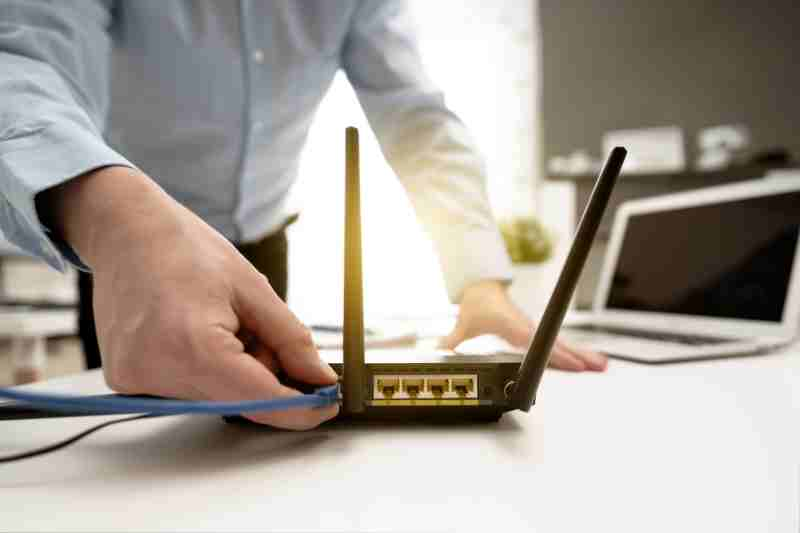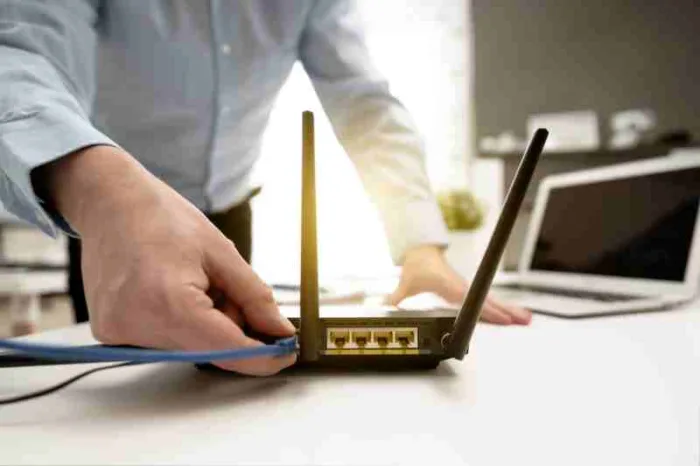Key takeaways
- Strong internet connections are an integral part of a functioning building with smart technology.
- A WiFi gateway reduces the physical space needed for hardware because it combines the functions of routers and modems.
- Gateways should be placed in a central location, preferably elevated, to maximize their reach.
- WiFi gateways can be paired with your building’s smart locks to enable lock functions from far distances.
- Two communication protocol alternatives to WiFi include Bluetooth and Z-Wave.

These days, it’s impossible for a building to function without the internet. In fact, a working WiFi network gives life to everything from smart locks to security systems. But offering quick, reliable internet often comes with mountains of hardware. One way to decrease this hardware is by opting for a WiFi gateway.
Without a working wireless network, there’s a big possibility that your building isn’t living up to its full potential. Keep reading to learn more about WiFi gateways, including how they work. We also go over four frequently asked questions about this unique connection method.
In this post, you’ll discover:
- What is a WiFi gateway?
- How does a gateway work?
- 4 WiFi gateway FAQs
- How does a gateway pair with a smart lock?
- WiFi gateway vs. Bluetooth vs. Z-Wave
What is a WiFi gateway?
Essentially, a WiFi gateway is a device that combines the purpose of both a modem and a router. Separately, a modem is a device that connects your smart devices with your ISP (internet service provider), while a router is a device that translates the modem’s data and distributes it as an apartment building WiFi signal to many devices.
So, a WiFi gateway is a hardware device that has the function of both a modem and a router in a single device.
The reason many people opt for wireless gateways over a detached modem and router system is that it’s a single-box unit and requires fewer wires and cables. Furthermore, WiFi gateways only require a single power outlet, and the box itself takes up less room than its counterparts.
How does a WiFi gateway work?
Now that you know what a wireless gateway is, let’s discuss how they work.
A WiFi gateway is useful in businesses and buildings with numerous network device connections. This is because they make it possible to connect multiple devices using fewer components.
In other words, a wireless gateway makes it easy for two or more networks with different data to connect easily. Meanwhile, the gateway serves as a single point of data conversion.
This is especially useful in buildings that utilize WiFi smart locks.
Discover touchless entry with ButterflyMX:
4 WiFi gateway FAQs
Many questions pop up when exploring this particular topic, which is why we’ve compiled the top frequently asked questions about WiFi gateways below.
Here are the four most commonly asked questions about wireless gateways:
- Where should a gateway be placed?
- Is a WiFi gateway the same as a router?
- How fast should my gateway speed be?
- Is there a fee for using my WiFi gateway?
1. Where should a gateway be placed?
Do you need your wireless connection to be dispersed throughout the entire building? If so, then the best place to put a WiFi gateway is in a central location.
The reason you want it in a central location is that it will have the most equal, widely-reaching range in this position.
You should also consider elevating your gateway. This way, you’ll avoid disrupting its signal with large furniture. Placing the gateway on a bookshelf or desk is an easy option.
2. Is a WiFi gateway the same as a router?
This is perhaps the most frequent inquiry about gateways. The short answer is that a gateway is different from a router, though they have many similarities.
So, how are they similar? Both devices regulate data traffic and dictate its flow between two or more networks.
Conversely, how are they different? A WiFi router is primarily used to push network data packets to connected devices. However, a gateway’s job is to translate incoming data and convert it in a way that easily connects with the final destination as it moves through the router.
3. How fast should my gateway speed be?
According to the FCC, the ideal broadband speed for WiFi gateways is a minimum of 25Mbps. If you suspect that your broadband speed is not up to par, many sites offer free gateway speed tests.

4. Is there a fee for using my WiFi gateway?
There may be a fee to use your WiFi gateway, depending on where you get your gateway. If you purchase one through a network provider, you may have to pay a monthly WiFi gateway fee until the device is paid off.
However, if you know exactly which gateway a provider uses, you can purchase the gateway separately and will not owe the provider an extra fee.
How does a gateway pair with a smart lock?
Incorporating a WiFi gateway is a great idea — especially if you’ve installed proptech devices like smart locks. Gateways enable you to remotely perform many functions that would otherwise require you to be within approximately 20 feet of the lock.
These functions include:
- Locking and unlocking doors
- Setting up or deleting PIN codes
- Accessing entry records
Additionally, by pairing your building’s smart locks with your internet provider, you can reduce the amount of power needed to connect your smart locks and other smart devices to your internet source.
WiFi gateway vs. Bluetooth vs. Z-Wave
WiFi is the most common wireless communication protocol, but it’s by no means your only option. Let’s take a look at the differences between WiFi, Bluetooth, and Z-Wave.






